Beyond Jollof: Why African Cuisine Deserves More Recognition
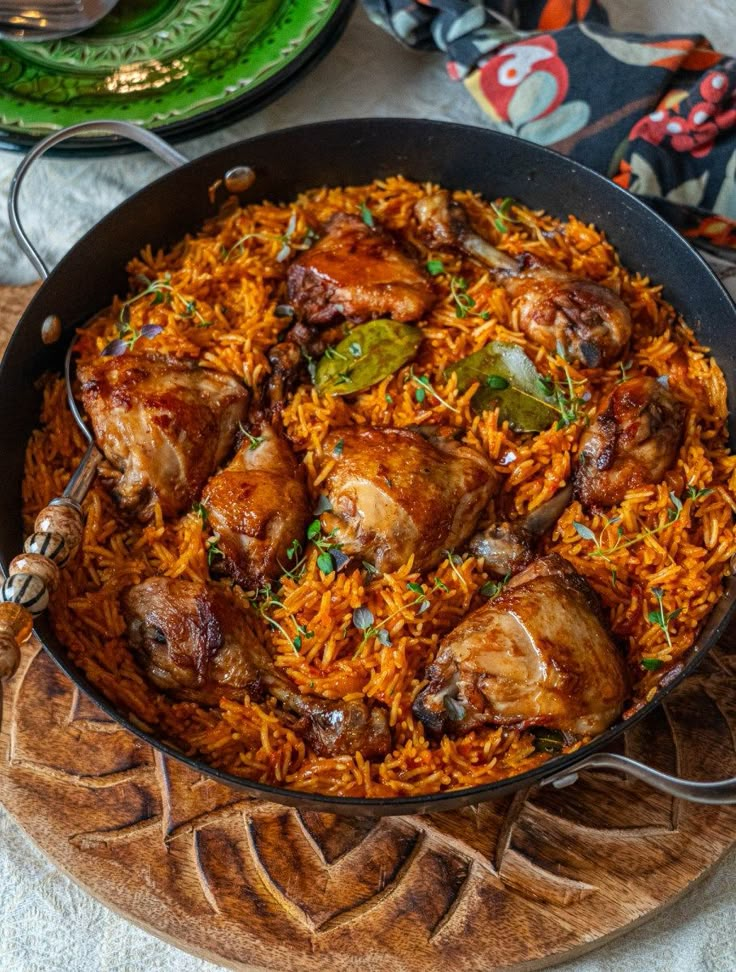
Every time someone says, “I want to try African food,” I pause. Not because I doubt their sincerity, but because I already know what’s coming. Jollof rice. Or maybe Fufu with Egusi. And that’s usually it. As much as I love these staples, as much as I’ll defend a perfectly spiced pot of Nigerian Jollof until my arms get tired, this narrow definition of African cuisine does a disservice to a continent whose culinary landscape is as vast, complex, and diverse as its languages, landscapes, and cultures.
It’s not that Jollof rice, Egusi, or Fufu aren’t important; they are iconic, yes, but they are just the tip of the iceberg. The problem is simple: African food has been flattened in global perception into a handful of dishes that are easy to recognize, easy to Instagram, and easy to sell.
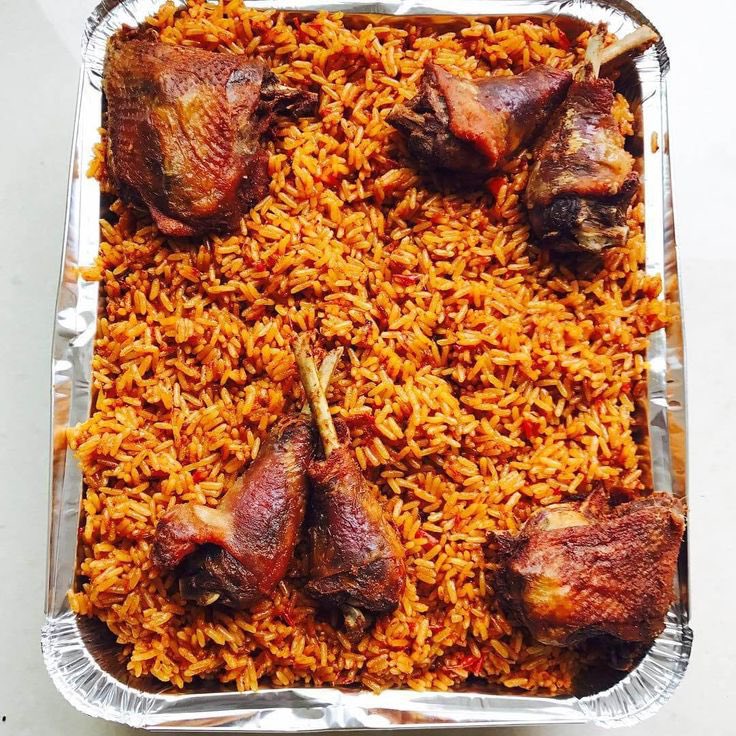
Meanwhile, countless other dishes, each with their own history, flavour profiles, and cultural significance, remain largely invisible. It’s time to set the record straight. African food is more than Jollof, more than Egusi, more than Fufu. And if we don’t start recognizing that, we’re robbing the continent of its culinary richness and complexity.
The Familiar Trap: Jollof as the Default
Ask anyone to name an African dish, and nine times out of ten, Jollof rice is the answer. It’s understandable. Nigerian and Ghanaian Jollof warshave dominated social media for years. Cook-offs, memes, even heated debates in diaspora communities have elevated this simple rice dish to near-mythical status. And yet, as beloved as it is, the obsession with Jollof contributes to a broader problem: the erasure of everything else.
Consider the casual restaurant or food festival that claims to serve “African cuisine.” Nine times out of ten, the menu is heavy on Jollof rice, maybe some Egusi stew, perhaps Fufu if they’re being fancy. Rarely do they feature Yassa from Senegal, Ndolé from Cameroon, or Injera with Doro Wat from Ethiopia. Why? Because these dishes are less familiar, harder to prepare for mass consumption, or simply not as “marketable” in the eyes of restaurateurs catering to a global audience.
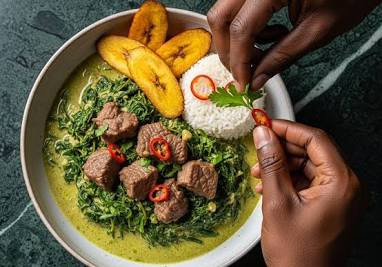
This simplification isn’t just a culinary oversight; it’s a cultural one. By reducing African cuisine to a few recognizable dishes, we ignore centuries of culinary innovation, adaptation, and fusion that have shaped the continent’s kitchens. Every region has its own story, its own set of ingredients, and its own signature dishes that deserve recognition.
Hidden Gems of West Africa
West Africa, often associated globally with Jollof rice, is a treasure trove of flavours waiting to be discovered. Take Waakye from Ghana, for example, a street food staple that combines rice and beans, often served with fried plantains, boiled eggs, and a variety of meats. It’s hearty, flavourful, and deeply rooted in Ghanaian culture, yet it rarely makes it to international menus.
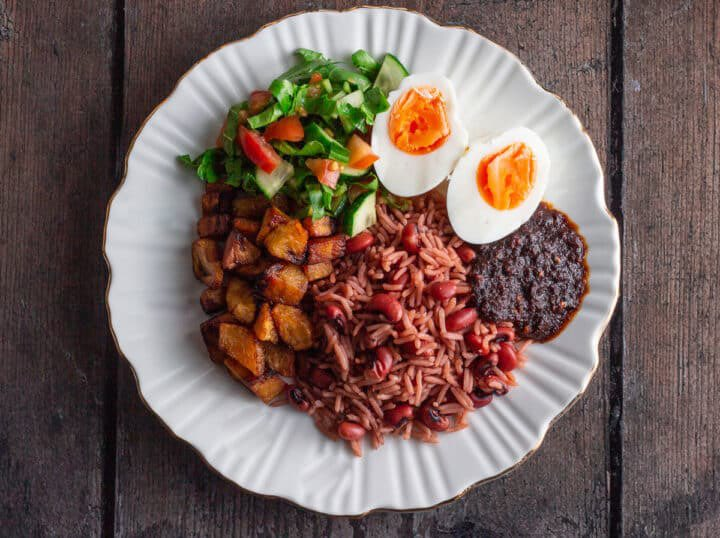
In Senegal, Thieboudienne, the national dish, is a beautifully balanced combination of rice, fish, and vegetables simmered together in a savoury tomato-based sauce. Meanwhile, Yassa, a marinated chicken or fish dish cooked with mustard, onions, and lemon, offers a tangy, complex flavour profile that West Africans have perfected over generations. These dishes, rich in history and technique, deserve the same global recognition that Jollof rice has received.
Central Africa: A World of Stews and Roots
Moving into Central Africa, the culinary story shifts. Here, stews dominate, often built around local ingredients that speak to the region’s biodiversity. Cameroon’s Ndolé, made with bitter leaves, peanuts, and either fish or beef, is an example of culinary sophistication and balance. Its slightly bitter undertone, complemented by nutty richness, creates a flavor profile that is simultaneously bold and comforting.
Gabonese cuisine offers Poulet Nyembwe, where chicken is simmered in a sauce of palm nuts, garlic, and onions. It’s earthy, savoury, and emblematic of a cuisine deeply connected to the land. Central African dishes may be less familiar to global audiences, but they are no less iconic—they carry the same weight of history, community, and identity that Jollof rice embodies in West Africa.
East Africa: Spice, Grain, and Celebration
In East Africa, food is as much about communal experience as it is about flavor. Ethiopia’s injera, a spongy sourdough flatbread, serves as both plate and utensil for dishes like Doro Wat, a spicy chicken stew that has been perfected over centuries.
Kitfo, minced raw beef seasoned with clarified butter and spices, is another example of ceremonial cuisine, traditionally reserved for special occasions. These dishes reveal the region’s history, its trade routes, and the influence of spices that traveled from distant lands to local kitchens.
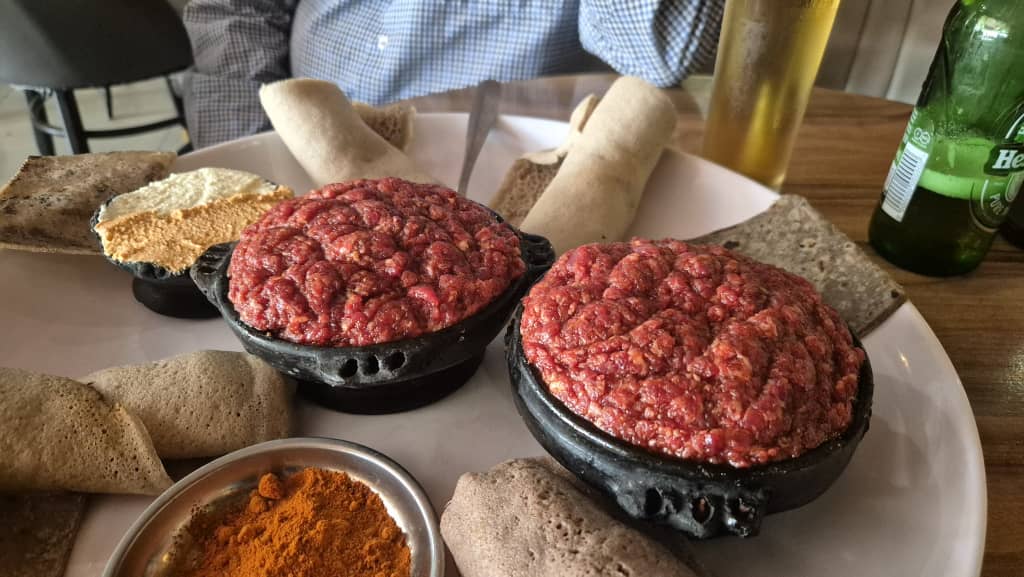
In Kenya and Tanzania, Ugali, a dense maize porridge, may seem humble, but it is the foundation of countless meals, pairing effortlessly with vegetable stews, meats, and sauces. Its simplicity is deceptive; it is the canvas upon which East African culinary artistry is displayed.
Southern Africa: Fusion and Innovation
Southern Africa, influenced by centuries of migration and cultural exchange, presents a unique culinary fusion. South Africa’s Bunny Chow, a hollowed-out loaf of bread filled with curry, is a legacy of the Indian diaspora in Durban, blending African, Indian, and colonial histories into one flavourful bite. Bobotie, a spiced minced meat dish topped with an egg custard, reflects Cape Malay influence, balancing sweet and savoury in a comforting, celebratory meal.
Even snacks like Biltong, dried, cured meat, carry cultural significance, representing centuries of preservation techniques perfected in a rugged environment. Southern African cuisine reminds us that African food is not static; it evolves, adapts, and innovates, just as its people have throughout history.
North Africa: Aromatics, Stews, and Complexity
In North Africa, centuries of trade, conquest, and cultural exchange created a cuisine steeped in spices and slow-cooked delicacies. Moroccan tagine, a stew cooked in a distinctive conical pot, combines meat, vegetables, dried fruits, and an array of spices to produce rich, layered flavours.
Tunisia’s harissa, a fiery chili paste, adds heat and depth to nearly every dish, a testament to the region’s bold flavor sensibilities. These cuisines, often overshadowed by their West African counterparts in global discourse, are central to understanding the full scope of African culinary genius.
Why African Food Deserves More Recognition
Reducing African cuisine to a handful of dishes does more than limit global exposure; it diminishes the continent’s cultural narrative. Every region, every community, and every family has recipes that carry history, identity, and creativity.
From the smoky stews of Central Africa to the ceremonial plates of East Africa, from Southern Africa’s fusion innovations to North Africa’s spice-laden kitchens, the continent’s culinary landscape is vast and richly varied.
When we insist that African cuisine equals Jollof rice, we erase the stories of countless dishes that have sustained generations, fostered communal ties, and inspired culinary innovation. Recognizing these dishes is about more than taste, it’s about honouring culture, history, and identity.
A Call to Curiosity
If you truly want to explore African cuisine, curiosity is the first ingredient. Ask for Waakye instead of Jollof. Sample Ndolé, Doro Wat, Bunny Chow, or Tagine. Visit markets, talk to home cooks, and learn the stories behind the food.
African cuisine is not a single dish; it’s a continent in a bowl. And when we start to see it that way, we begin to understand the breadth of creativity, resilience, and cultural heritage embedded in every bite.
It’s time to look beyond the familiar, to celebrate African cuisine in its full diversity. Because the next time someone says, “I’m trying African food,” let’s make sure they’re not just eating Jollof rice, they’re tasting history, culture, and a continent’s culinary soul.
(All images are from X, formerly twitter)
More Articles from this Publisher
Nigeria Secures West Africa’s Biggest Military Jet Acquisition with 24 Italian M-346FA Fighters

Nigeria makes history with West Africa’s largest military jet deal, acquiring 24 Italian M-346FA fighters to modernize i...
How to Keep Your Wig Safe from Snatchers This December

A humorous yet practical guide for Lagos women navigating Detty December. Learn how to protect your wig, embrace natural...
Queen Of Talk Show: What Is Next For Morayo Afolabi Brown?

After 12 years shaping Nigeria’s talk TV, Morayo Afolabi Brown isn’t just back; she’s creating her own stage. The Morayo...
Five Menstruation Myths That Still Need to Go

Why do menstruation myths survive in a world of modern medicine? We examine five beliefs science has already debunked.
ITU Reports That 2.2 Billion People are Offline, So How “Global” Is Your Feed Really?

Your feed feels “global” until you realize who isn’t in it. In just 10 countries, about 1.25 billion people are offline,...
The Population Plot Twist: What Really Changed in OECD Countries Since 1990?

Migration quietly rewired many OECD countries in 35 years. Who benefited, who paid the price, and why the backlash keeps...
You may also like...
Super Eagles' Shocking Defeat: Egypt Sinks Nigeria 2-1 in AFCON 2025 Warm-Up

Nigeria's Super Eagles suffered a 2-1 defeat to Egypt in their only preparatory friendly for the 2025 Africa Cup of Nati...
Knicks Reign Supreme! New York Defeats Spurs to Claim Coveted 2025 NBA Cup

The New York Knicks secured the 2025 Emirates NBA Cup title with a 124-113 comeback victory over the San Antonio Spurs i...
Warner Bros. Discovery's Acquisition Saga: Paramount Deal Hits Rocky Shores Amid Rival Bids!

Hollywood's intense studio battle for Warner Bros. Discovery concluded as the WBD board formally rejected Paramount Skyd...
Music World Mourns: Beloved DJ Warras Brutally Murdered in Johannesburg

DJ Warras, also known as Warrick Stock, was fatally shot in Johannesburg's CBD, adding to a concerning string of murders...
Palm Royale Showrunner Dishes on 'Much Darker' Season 2 Death

"Palm Royale" Season 2, Episode 6, introduces a shocking twin twist, with Kristen Wiig playing both Maxine and her long-...
World Cup Fiasco: DR Congo Faces Eligibility Probe, Sparks 'Back Door' Accusations from Nigeria

The NFF has petitioned FIFA over DR Congo's alleged use of ineligible players in the 2026 World Cup playoffs, potentiall...
Trump's Travel Ban Fallout: African Nations Hit Hard by US Restrictions

The Trump administration has significantly expanded its travel restrictions, imposing new partial bans on countries like...
Shocking Oversight: Super-Fit Runner Dies After Heart Attack Symptoms Dismissed as Heartburn

The family of Kristian Hudson, a 'super-fit' 42-year-old marathon runner, is seeking accountability from NHS staff after...
